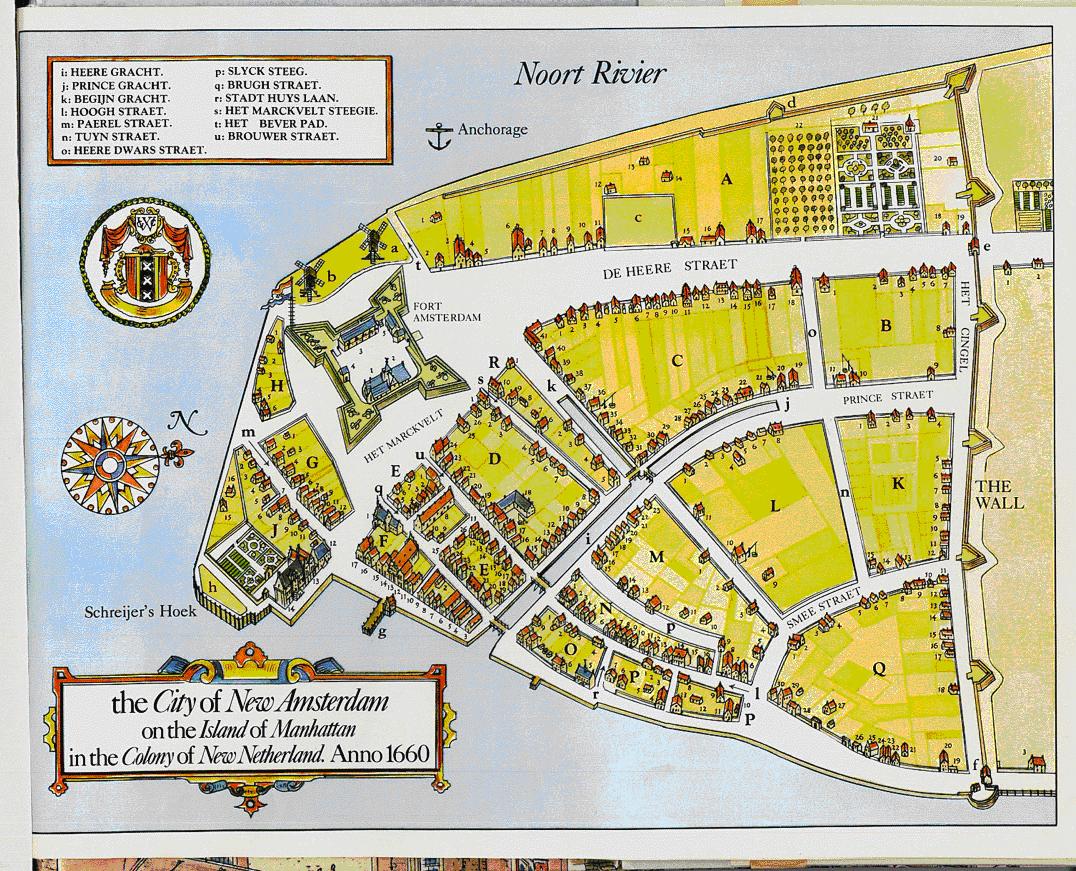Blauvelt FamilyThe Snyder/Petersen American line to Blauvelt begins with Gerrit Hendricksen (Blauvelt) who came to America in 1637 the ship 'Kalmer Nyckel'
Gerrit Hendricksen (Blauvelt)Generation One:
Gerrit Hendrickson Blauvelt
Notes: In November 1637, two ships sailed from Gottenburg, Sweden, bound for the New World. A severe storm forced
them to land for repairs at Texel in the Netherlands. One of these ships was the "Kalmer Nyckel", which finally set sail again
on December 31, 1637. (The other ship was the "Fogel Grip") On board were six passengers, including Gerrit Hendricksen. "Early in November of 1637, two little ships
sailed from Gottenburg in Sweden; the 'Fogel Grip' and the 'Kalmer Nyckel'. They were bound for the 'New World' where a Swedish
colony was to be established under the direction of Pieter Minuet, former governor of the Dutch colony of New Amsterdam. A terrific
storm swept the North Atlantic that winter. It nearly wrecked the two small crafts, and they were forced to put in at the Texal, in
the Netherlands, for refitting and repairs.
Kiliaen Van Rensselaer had acquired, by grant from the West India Company, a vast tract of land, approximately 1,400,000 acres,
on the banks of the Hudson River, in the New Netherlands, in the vicinity of what is now the city of Albany. This he was endeavoring to
colonize, and he now had six colonists, and some much needed stores which he wished to send over. He had long known Peter Minuet, and on
the strength of this friendship he induced Peter to take these people and supplies on board to be delivered at New Amsterdam, and from there
to be transported by such means as offered up the Hudson to Rensselaerwick.
The little ships were again ready to sail on December 20th, but the bad weather continued, and on the 29th Van Rensselaer wrote
his cousin, Wouter Van Twiller, then the governor of the New Netherlands - "This uncertain weather and the tarrying of my people make
me so stupid that I hardly know what I am doing."
Finally, on December 31st, the 'Kalmer Nyckel' set sail on her long and weary journey across the Atlantic, bearing
Rensselaer's six passengers. One of these was a Dutch boy known only as Gerrit Hendricksen, (Gerrit, son of Hendrick). Van Rensselaer
said this boy was a shoemaker by trade, and for various reasons we believe him to be the son of a Hendrick Gerryts and his wife Geertje,
or Grietje, and to have been baptized in the old cathedral in Deventer, Province of Overyssel, on April 9th, 1620.
It apparently was late in March when Gerrit and his companions were finally put ashore in New Amsterdam, and started on the last
lap of their journey up the North River to Rensselaerwick, where Gerrit was supposed to be employed in the cultivation of tobacco 'under
Albert Andreessen, if it (the planting) has succeeded well, otherwise with the farmers.'
He returned to New Amsterdam, where he married, on May 7, 1646* in the New Amsterdam Dutch Reformed Church, Maria (Marretje) Lamberts Moll,
the daughter of Lambert Huybertsen Moll, a ship builder on Manhattan Island. Marretje died between September 8, 1674 (when she witnessed the
baptism of her first grandchild) and October 22, 1679, when Gerrit married Josyntje Jans Thomas, widow of Peter Wesselszen Van Norden.
[*According to the footnotes that appear for some of the early dates in the NYRDCh. records, May 7, 1646 is probably the date on which the banns
were registered. BEH, Sept 15, 2001]
The records of Rensselaerwick show that Gerrit was employed there from April 2nd, 1638 until April 2nd, 1641, at wages ranging from the
equivalent of $16.00 to $40.00 a year. Although a shoemaker by trade, Kiliaen Van Rensselaer had hired Gerrit as a field hand to cultivate tobacco
on his land in Rensselaerwick, near Albany. The ship arrived at New Amsterdam in March 1638, and Gerrit went on to Rensselaerwick, where he was
employed from April 2, 1638 until April 2, 1641 at wages equivalent to between $16.00 and $40.00 a year.
Of Gerrit's movements from the time when he faded from the records of Rensselaerwick to May 1646, we know not a thing, but it seems quite
obvious that he retraced his steps back to New Amsterdam, and employed at least a part of his time in a successful courtship, for, under the date
of May 7th, 1646, we find this entry in the records of the New York Dutch Church - 'Gerrit Hendricksen, j.m. van Deventer, en Marie Lamberts,
j.d. uyt N. Nederld'. (Gerrit Hendricksen, young man from Deventer, and Marie Lamberts, young daughter out of New Netherlands.)
Marie, or Marretje, as she usually appears in the records, was the daughter of a hard-headed, hard-drinking, hard-fisted, but withal
a hard-working and prosperous shipbuilder on Manhattan Island, named Lambert Huybertsen Moll, who lived at what is now 253 Pearl Street,
New York City, and who, in spite of his failings, seems to have been a public-spirited citizen and a man of considerable importance in the
little community.
If we believe the church record statement that Marretje was 'out of,' (born in) the New Netherlands, she must have been one of the
first white children born on Manhattan, for it is safe to assume that she was at least sixteen years of age at the time of her marriage
in 1646. That would make her birth date not later than 1630. I rather question this, for I fail to find any mention of her father in the
records prior to 1641.
On December 6th, 1646, over the signature of William Kieft, Gerrit received a grant of 25 morgens of land (approximately 50 acres)
on Manhattan Island. This farm, or bouwerie, was of irregular shape, but roughly it extended from what is now the Bowery, east to Avenue B,
and from a little below the present Houston Street, north to about the middle of Tompkins Square, although the frontage on the 'Bouwerie Lane'
was only from First to Fourth Streets.
Gerrit had good neighbors, for later the land on either side of his farm was owned by no less a person than Director Pietrus Stuyvesant,
the governor of the New Netherlands. It was Pietrus who built a small chapel on his farm where St. Mark's Church now stands, and we have reason
to believe that some of Gerrit's children were baptized in this chapel.
On May 13th, 1654, Gerrit's grant was converted into a fee, and under date of May 3rd, 1664, he also received a grant for a stretch of
meadow land extending to the East River.
Valentine's Manuel tells us that in 1663 Gerrit had a home site, or ton house, on Broadway six and four fifths rods south of the present
Maiden Lane. I doubt if he owned this, for I have failed to find anything to indicate his possession of it.
During the next forty years we find little concerning Gerrit. There are a few references to him in the sale of land adjoining his, and he
makes his quite regular appearance in the records of the New York Dutch Church at the baptism of his children, and occasionally as a sponsor at the
christening of a child of someone else. Apparently, he was just a plain, unassuming citizen going quietly about his own business of making a modest
living for himself and his increasing family.
After bearing thirteen children, Marretje passed to her reward sometime between September 8th, 1674, and October 22nd, 1679; for on the
former date she and Gerrit were witnesses at the baptism of their first grandchild, and on the latter date, Gerrit took unto himself a second
wife, in the person of Josyntje Janse, widow of Pieter Wesselzen. By her he had two more children.
On November 28th, 1683, Gerrit, 'lying sick in bed, but of perfect sound mind and memory', made his last will and testament. That he
did not survive too long after that is shown by the fact that on March 4th, 1685, Josyntje took unto herself a third husband, in the person
of one Anthony Sarley, widower of Mayken Boudens. The Joint Will of Josyntje and Anthony was dated March 29, 1688, proved November 19, 1702
-- "both having lately deceased". [Moos, 1987, #1, p. 3]
GENERATION TWO: (In our lineage) "He served on the first Grand Jury in Orange County in 1703, and was the tax collector in 1704. In 1709 he purchased fifty acres of land at what
is now Orangeburg, NY for approximately $40.00, and here he built a stone house just west of the old Clausland Burying Ground. It was still standing as
late as 1935.
"We do not know when he or is wife died, or where they were buried, but we do know that he was listed in the census of 1712."
MARGRIETJE GERRETSE BLAUVELT, (daughter of Gerrit Hendrickszen Blauvelt & Marretje Lamberts Moll) bapt. N.Y.D.C.,
September 25, 1661. On April 9th, 1682 she married Lambert Ariaensen (Smith/Smidt)
in New York. He was the son of Ariasen Lambertsen and Dirckje Cornelise, born in Thuly in the provence of Gelderlandt in the Netherlands,
30 Dec 1655. Lambert came to America with his parents and 5 other children.
Lambert and Margietje were were amoung the 11 founders of the Tappen Church and Lambert was the first elder. He was also one of the original
Tappan patentee's with his father and brother Cornelius.
Our line continues from Joseph Blauvelt - His son, Johannes Joseph Blauvelt and grandson Cornelius were our Blauvelt Revolutionary War ancestors
Maria Blauvelt married Jacon Hardenbergh and is Gertrude Louisa (Snyder) Wood's grandmother
Ebenezer Wood married Rosanna Hardenbergh, their daughter is Gertrude
Gerritt Hendrickson's son Abraham Gerretse Blauvelt lived in the Tappan Patent. He married Grietje Minelay Tallman. Their eldest son,
Jacob Abramse Blauvelt, married Pieterje Haring. He, too, resided in Tappan. Jacob Abramse Blauvelt purchased 300 acres of land in New
City on which the Blauvelt House now stands. His son, Jacob Ja. Blauvel,t purchased this plot of land from his father.
Jacob Ja. Blauvelt was the first person to farm this land. He married Mary Haring. He built a house closer to the road. His son, J
ohn J. Blauvelt inherited the house from him.
John J. Blauvelt was baptized at the Tappan Reformed Church. At some point, he donated two acres of land for a school. The school
was known as the Street School. The original site of the school was the southwest corner of the Blauvelt property. Its site was
changed in the late 1800s. The school was open until June 1983, when it was closed due to declining enrollment.
Jacob J. Blauvelt married Margaret Remsen and they had five children. He built the Blauvelt House which now stands. His wife,
Margaret spoke only Dutch, and her husband translated for the children. Jacob J. Blauvelt, as well as being a farmer, served
as Justice of the Peace, Inspector of Common schools, Overseer of the Poor, and served in the 83rd Regiment of Infantry, New
York State Militia. He was ranked as lieutenant in 1828, captain in 1830 and captain of light infantry in 1834.
The eldest son of Jacob J. Blauvelt, John Blauvelt, married Ellen Conklin of Pomona. John died from typhoid or diphtheria.
The epidemic also claimed the lives of all his children except for Stanley Vincent Blauvelt.
Tunis Blauvelt, the brother of John Blauvelt, married Ellen Conklin after John's death. Besides being a farmer, Tunis was also
a lawyer, justice of the peace, and several times he was supervisor of Clarkstown, as well as the loan commissioner of Rockland.
He was greatly admired by others and was often called "Squire".
Stanley Vincent Blauvelt was the only surviving son of John Blauvelt. His uncle Tunis took him to the New City courthouse to study
law, and he became a clerk. He married Antoinette Hoffman of Nyack. He became a wanderer after the first of two daughters. He left
his family on the farm and traveled to Samoa, New Zealand, South America and Australia. Late in his life, he returned to the farm
and lived here for the last ten years of his life.
Annie Blauvelt Francis was the older daughter of Stanley. After Tunis died, the Blauvelt women left the farm and rented it to a school
teacher by the name of Will Blauvelt. Annie married Alfred E. Francis and moved to Brooklyn and Hoboken before moving back to the farm
to start a chicken business. Alfred died of pneumonia leaving one daughter, Margaret Antoinette. After Alfred died, Annie worked as a
welfare investigator, served on the ration board during W.W.II, and was a trustee of the Street School.
The last Blauvelt to live here was Anne's daughter, Margaret Antoinette Francis Gibbons, and her husband, John Lyon Gibbons.
The Blauvelt House was purchased on December 11, 1970. A major contributor to the purchase was Mr. and Mrs. Gibbons who also
donated many of the items in the house.
Click here to see Association of Blauvelt Descendants
Gerrit Hendrickszen de blau boer
arrived in this country from Deventer, Province of Overijssel in The Netherlands in 1638. Gerrit arrived at
"The Rocks" at Swede's Landing, DE in March 1638 aboard the Kalmar Nyckel. He then traveled up the Hudson River to Rensselaerwyck.
On 7 May 1646 he married
Marretje Lamberts Moll
in the New Amsterdam (NYC) Dutch Church. He received a grant of farmland on Manhattan
Island on what is now Broadway near Maiden Lane and became known as the Blau Boer (Blue Farmer), his farm, the Blau Veldt.
On 22 October 1679, he married
Josyntje Janse. In due time, all the surviving children of Gerrit, with the exception of Elizabeth (child of the second marriage) became shareholders
in the Tappan Patent, and resided there.
The Kalmar
Nyckel Foundation of Delaware designed and built a replica of the Kalmar Nyckel at a shipyard adjacent to the original landing site. The new
Kalmar Nyckel was launched on September 28, 1997
It is a natural question. I have been asked a hundred times-"What is the origin, the meaning of the name Blauvelt? I can only reply that,
as to the origin, I do not know, though I have a theory. However we do know that the meaning of the name is blue field.
Likewise I have repeatedly been asked about the beginning of the Blauvelt family. Many genealogists, by devious ways, have endeavored to
show their descent, at least from William the Conqueror, or better still, from Charlemagne. Indeed, I have seen instances where an unbroken
line right back to Adam has been "built up."
As for me, while I may do a bit of theorizing, I make no claim except that we American Blauvelts are descendant from a humble Dutch boy, of
the peasantry, who came to America in 1638 to work as a field hand, cultivating tobacco, on the estate of Kiliaen VanRensselaer, on the Hudson River.
This Dutch boy didn't even have a family name, or at least, if he did have one, and I think he did, he did not use it. He was only known by
his patronymic as Gerrit Hendricksen, (Gerrit son of Hendrick). Where he came from, who his parents were, when he was born, is all in the
realms of uncertainty.
In three letters written by VanRensselaer in December 1637, he refers to this boy. In two of the three letters he says that Gerrit was from
Nykerk. In one of them he says that he was fifteen years of age, and in another he tells us that he was a shoemaker.
1) On the other hand, at the time of his marriage, in 1646, Gerrit himself said that he was from Deventer.
Deventer and Nykerk are about twenty miles apart, the former in the Province of Overyssel, the latter in Gelderlandt, in the Netherlands.
Even in those days Deventer was a thriving little city on the Yssel River, while even to-day Nykerk appears to be rather unimportant. It
is quite likely that the boy was born on a farm somewhere between the two places, and gave Deventer as the place of his nativity because
it was the larger.
Neither the records of the church at Deventer, nor those of the church at Nykerk show the baptism of a child Gerrit, son of Hendrick,
who would have been fifteen years of age in 1637, but the records of both churches do show the baptisms of three Gerrits whose fathers
were named Hendrick, who would be somewhere near the age of fifteen in that year. Of these, the one who seems more nearly to fit, for
various reasons, was the child of Hendrick Gerryts and his wife Geertje, or Grietje, (we think the latter), baptized at Deventer on April
9th., 1620.
Now let us consider the family name. In the Netherlands, in those days, a family name was regarded as a sort of luxury to be enjoyed only
by the aristocracy. Mr. Louis P. deBoer once wrote that for one of the peasantry to use a family name, even though he had one, would have
been regarded as an affectation and a bit presumptuous, so those of the lower strata were content to be known only by their patronymic, their
father's name, as Gerrit Hendricksen, Gerrit son of Hendrick. This might, and usually did, change with each generation, thus the supposed
father of our Gerrit Hendricksen was Hendrick Gerryts. A striking illustration of this is the progenitor of the Haring family in America.
He quite definitely descended from Jan Haring of Hoorn Castle, whose deeds of valor are recorded in Motley's 'Rise of the Dutch Republic.'
This first American Haring was only known as Jan Pieterse when he came to this country, and at first his sons appear as Pieter and Cozine
Jansen.
Our Gerrit never used the name of Blauvelt himself, though we do find him referred to in early
records on Manhattan as de Blau boer, (Blue Farmer) and this may be significant.
Here is what does seem to me to be most significant. All of Gerrit's children who attained maturity, with the exception of one daughter,
by the second marriage, named Elisabedt, eventually settled on the Tappan Patent. At first they appear in the Tappan records as Johannes
Gerritse, Abraham Gerretse, Hendrick Gerretse, etc. Then, almost simultaneously, they begin to appear in the records as Johannes Gerretse
Blauvelt, Maria Gerretse Blauvelt, wife of Cozine Haring, etc. Even Elisabedt, who had remained in what then had become New York City, where
she had married Daniel Berkelo, began to appear, about the same time in the records of the New York Dutch Church, as Elizabeth Blauvelt.
Now, notice that they all took the Blauvelt name! Not, as in some other families where some descendants in time settled down to a form of
their patronymic, such as Cornelison, or Gerritson, while others adopted, or became know by a "place name" such as Van Deventer, (from Deventer),
or VanHorn, VanHouten, etc.
Why Blauvelt? Where did they get the name in the first place, and why not VanDeventer, or Van-Nykerk, from whence their father came?
The name of Blauwveld had been "coined" in the Netherlands about 150 years before Gerrit came to America, and I believe that it was his rightful
family name, even though, for the reasons I have given, he did not use it. Do not let the difference in spelling trouble you. Right here in
America I have found the name of those whom we know were descendant from Gerrit, spelled fifteen different ways and the best-or-worst of these
was Blaaeuwveldt. Even to-day, some of the Nova Scotia branch of the family, who we know descend from a Theunis Blauvelt who was born at Tappan,
spell the name with the "d."
Does it not seem unlikely that a practically identical name would be "coined" over here in America some 150 odd years after it had come into use
in the Netherlands?
The answer, to my mind, is that it was not "coined" here. It was Gerrit's own family name, though he had never used it, and his children knew it
was their name. There was no guess work, no happenstance about it.
Well, then, what is the supposed origin of the Blauvelt name?
Way back in the 1500s the city of Enkhuysen, on the Zuyder Zee, was a quite important sea port. About 1487 a child was born,
presumably in Enkhuysen, and he was promptly baptized Pieter. In time, when he had attained manhood, he seems to have become
a ship owner in Enkhuysen. What other cognomen he might have used at first we do not know. It most likely was a patronymic,
for, according to Mr. deBoer, family names were in the formative stage in the Netherlands at that time. At any rate we begin
to find Pieter referred to as Blauhulch, Blauscuit, Blauschep and Blauseynt. Finally, in 1534, when Pieter had attained some
affluence and become a schout (a public official) and later sherriff of Enkhuysen, it settled down to Blauwveld.
Pieter acquired a coat-of -arms. It was a blue shield across the middle of which was a horizontal gold bar (fasse), above this
were two gold disks (besants), and below it, a third one.
2) The background of a coat-of-arms is termed the 'field,' and here we
have a shield with a blue field, and the meaning of Pieter's newly acquired name of Blauwveld is blue field.
I am no Dutchman, but Mr. deBoer, who is, has told me that hulch, schuit and schep are terms applied to certain types of ships.
In that period ships carried a shield on their counters, probably to designate owners, a sort of hand-me-down from Viking days.
Does it seem to be a long stretch of imagination to assume that Pieter's coat-of -arms was based on a blue shield used in this way
on his ships, and that he became known as the man Peter who owned the blue ships. (Blauschep), and still later as Pieter of the
ships with the blue shield, or blue field? This being rather a cumbersome title it was gradually condensed to Pieter van Blauwveld.
In a way this seems to be born out by the fact that later, when some of Pieter's descendants had married into the Riccen family,
we find his arms quartered with that of the Riccen family, and superimposed thereon was a smaller shield bearing the likeness of
a ship, (inescutcheon).
So much for Pieter and the name. Indeed, we know but little more about him, other than that his wife was name Geertruid, that
he had a son Simion Pietersen Blaeuvelt and a daughter Maria, who married Franck van Beest van Hemskirk in 1527. Incidentally,
a Jacob van Hemskirk sailed from Enkliuysen on an Arctic expedition in 1596. We wonder if he was a son, or relation of Franck.
If so, note again the maritime connection.
Simion Pietersen van Blaeuvelt had a son Frederick Simomsen Blaeuvelt. Perhaps it was he who married into the Hiccen family.
Frederick had a daughter Diew Frederickse who married Cornelius Hermansloon, and there our knowledge of the descendants of Pieter
seem to end. In fact, in 1928, Mr. deBoer wrote me from Holland that "the Blauvelt name seems to be extremely rare here, if indeed
it exists at all to-day".
Now does it seem such a far cry from the logical, to imagine that, considering the law of primogeniture, a younger son of Pieter,
or of one of his descendants of whom we have not learned, fell back into the peasant class and drifted over into the Province of
Overyssel, dropped the use of the family name because of his lowly station, and, known only by his patronymic, became the ancestor,
or even the father of our Gerrit Hendricksen? Let me call your attention to the fact that even among the descendants of Pieter of
whom we do know, the patronymic practice was continued as shown by the middle names.
Before we go into the matter of the Blauvelt descendants of our Gerrit we feel that we must say a
few brief words about the "pirate".
Ah! Ha! Murder will out! They say there is a skeleton in every closet, and we have all heard the
wisecrack that if we go too far in tracing our ancestry we are likely to discover a horse-thief.
Yes, there was a pirate, but, unfortunately we cannot claim him as our own, just as we cannot claim Pieter of Enkhuysen, or his coat-of -arms.
This may be a disappointment to the small boy Blauvelt descendant. Yes, and it may be an inspiration to someone with the time and ability to
do more extensive research in the archives of the Netherlands. This pirate most certainly had the Blauvelt name and again we have the maritime
connection.
To begin with, this pirate's full name was Capetyn Willem Albertse Blaeuvelt. From what we already know of patronymic practice that tells us that
his father's name was Albert. We also find it stated that he was from Monnikendam, a small town less than ten miles from Amsterdam, and about twenty
miles from Enkhuysen. In 1644 Willem had a wife named Dorothy, and a son Anthony, then living in London. We are also told that he was of fair
complexion, with gentle eyes and high stature.
The Capetyn is supposed to have received a commission at the Hague to operate the privateer, "The Grace", a frigate
From 1643 to 1656 we find many references to the Capetyn in the documentary history of the Colony,
3) outstanding among which is when, in
1649, after peace was declared, he sailed into what is now New York harbor with the Spanish ship "Tabasco". This created quite a furor,
even to the extent of the matter being aired before the High and Mighty Lords of the States General in the Nethertands.
4) If the Capetyn's deeds, at this stage of the game, were piratical, then others in high places were tarred with the same stick, for even Governor
Kieft was at one time a co-partner in the "Grace", and in the final settlement of the 'Tabasco" affair, Cornelius Tienhoven, the Lords and the Director,
(Pietrus Stuyvesant) and others, seem to have shared in the proceeds, when, in 1651, this, and other Spanish ships that had been brought in," were
declared good prizes."
From then until 1656 we find many references to the Capetyn, some good, some not so good, ranging from his standing sponsor at the baptism of
a child in the New Amsterdam Dutch Church, to standing into a rough and tumble fight with some of his crew, in which he drew his cutlass on them.
It would seem too that he did not always pay his bills and finally he sailed away for parts unknown while there was an attachment against his ship.
5) After 1656 the Capetyn does not seem to appear in the records of the colony, but we are told that, in 1663, he was operating piratically off
the Spanish Main, and to this day, so we are told, there is a town, a river and a bay in Nicaragua that bears the name of Bluefield because of
his activities in that locality.
6) I have just skimmed lightly over the worthy Capetyn's record. Indeed, since he is not a descendant, nor a known relation of our Gerrit, and we
are taking Gerrit as our starting point, he really has no place in this work. However, I have given him space in this foreword, lest I be taken to
task for ignoring a colorful and intriguing character, and too, because it most definitely shows that the Blauvelt name did exist in the Netherlands
less than fifty years before it was adopted by the children of our Gerrit Hendricksen de blau boer here in America; and while Gerrit himself was a
resident of "Little Old New York" the Capetyn of the Blauvelt name was using the little city as his port of embarkation.
To begin with, it is most definitely not regarded as good practice, or shall we say legitimate, in heraldic usage to appropriate a coat-of-arms unless
one can absolutely establish direct descent from the original possessor of that arms, so we use this arms with reservation. even though we believe that
we have the right. This is the coat-of-arms of Pieter Blaeuwvelt of Enkhuysen, (1534) and we cannot definitely prove that our Gerrit Hendricksen, (1620),
was a descendant from this Pieter, though we feel confident that he was. However, we must be honest with ourselves and take this fact into consideration.
The Blauvelt name seems actually to have been derived from this coat-of-arms. Sometime prior to 1534 there was a ship-owner in the city of Enkhuysen,
on the Zuyder Zee. His name was Pieter. He had no family name. Few did have family names in the Netherlands in those days. It would seem that Pieter
used a blue shield on his ships to show his ownership of them. The background of a shield is called the field, hence the name Blaeuwvelt meaning
blue field. Don't let the spelling trouble you, for we have found the name spelled more than fifteen different ways.
At first we find Pieter variously referred to as Pieter Blaushep, Blauhulch, Blauschuit and Blausynt. We have been told that shep, hulch, schuit
and synt are all types of vessels. For more uniformity no doubt, Pieter seems to have become van (of the) blue field,-Blaeuwveldt. We find that
Pieter was a schout, a public official in Enkhuysen in 1534.
What became of the descendants of Pieter we do not know. We can trace them for two generations and then the name seems to fade out. We understand
that the name is not known in the Netherlands to-day. We suspect that Pieter's descendants fell back into the peasantry, and as such, according to
the custom of the time, they did not use the family name even though we think they had such a name. Certain it is that our Gerrit's father was entered
in the records of the church at Deventer only as Hendrick Gerryts, (son of Gerrit), and our Gerrit himself used only his patronymic of Hendrick-son.
What seems most significant is that all of Gerrit's children simultaneously took the Blauvelt name in this country 150 years after it had been first
used by Pieter in Enkhuysen; and remember that the "Pirate," Capetain Willem Albertse Blaeuvelt, came from Monnikendam, twenty miles from Enkhuysen,
to New Amsterdam only five years after our Gerrit came here from Deventer or Nykerk. Would the children of Gerrit be likely to coin or invent a
name that was practically identical with the one that had been used in the Netherlands for 150 years, or would they be likely to assume a name to
which they had no right? We think not. We feel sure that Blauvelt was their rightful family name. If Blauvelt was their family name, and the
name originated with Pieter from his coat-of-arms, then they must have descended from Pieter and had a right to his arms as well as the name.
Now a few words about the coat-of-arms as we have shown it. There are very definite rules governing heraldry and, while we might like to embellish
this coat-of-arins with a helmet, crest, wreath, mantlings, supporters and a motto, and all the other decorations usually shown with a coat-of-arms
we do not wish to lay ourselves open to criticism for violating heraldic practice.
The laws of Heraldry are quite rigid in English practice, though not quite so much so on the Continent. The use of the helmet is only permissible in
English armoral bearings, and we Blauvelts are Dutch. The wreath and crest, not appropriate to Continental heraldry, in that of England are marks of
honor to which only those of great valor were entitled, and Pieter was only a ship-owner. Mantling, originally only decorative, in English heraldry
seems to have acquired some vague knightly significance; while supporters, also originally only decorative, now, in English usage, are confined to
royalty and nobility, and but very few have a real right to use them. Lastly, Reitstep gave us no motto.
In truth, a coat-of-arms has no place in American democracy. At the same time most of us feel a little pride if we think we may lay claim to one
that is derived from our remote old world forebears. If we borrow such insignia from old world practice we should also abide by these old world
restrictions in heraldic practice, and we should be content with this simple coat-of-arms, knowing that we are not assuming anything to which we
do not have a rightful claim.
This image was scanned from the book "The Legend of New Amsterdam" by Peter Spier
|
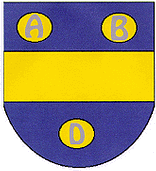

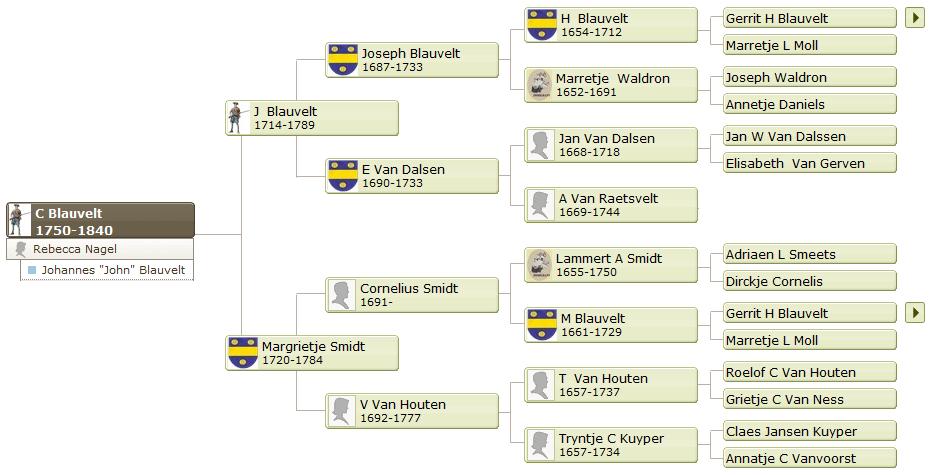
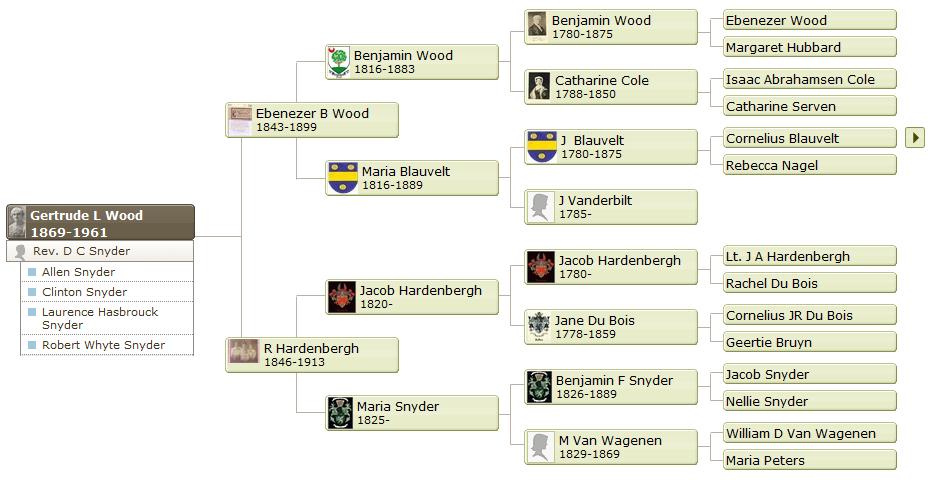
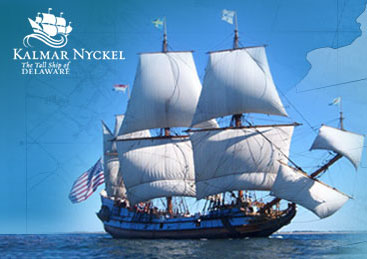
 of six guns and a complement
of fifty men, out of the port of New Amsterdam, against the Spanish in the West Indies, the Netherlands than being at war with Spain.
of six guns and a complement
of fifty men, out of the port of New Amsterdam, against the Spanish in the West Indies, the Netherlands than being at war with Spain.  Our authority for this coat-of-arms will be found in Reitstep's Armorial General, Vol. 1, page 215, where it is described:"D'azure, a fasce dor, acc.
de trois bes. du meme." this roughly translated is:- Blue, a fasse, (horizontal bar), gold, between three besants, (disks), of the same. Then too, we
have had correspondence regarding this with reliable authorities in the Netherlands.
Our authority for this coat-of-arms will be found in Reitstep's Armorial General, Vol. 1, page 215, where it is described:"D'azure, a fasce dor, acc.
de trois bes. du meme." this roughly translated is:- Blue, a fasse, (horizontal bar), gold, between three besants, (disks), of the same. Then too, we
have had correspondence regarding this with reliable authorities in the Netherlands. 